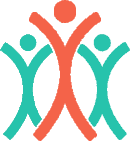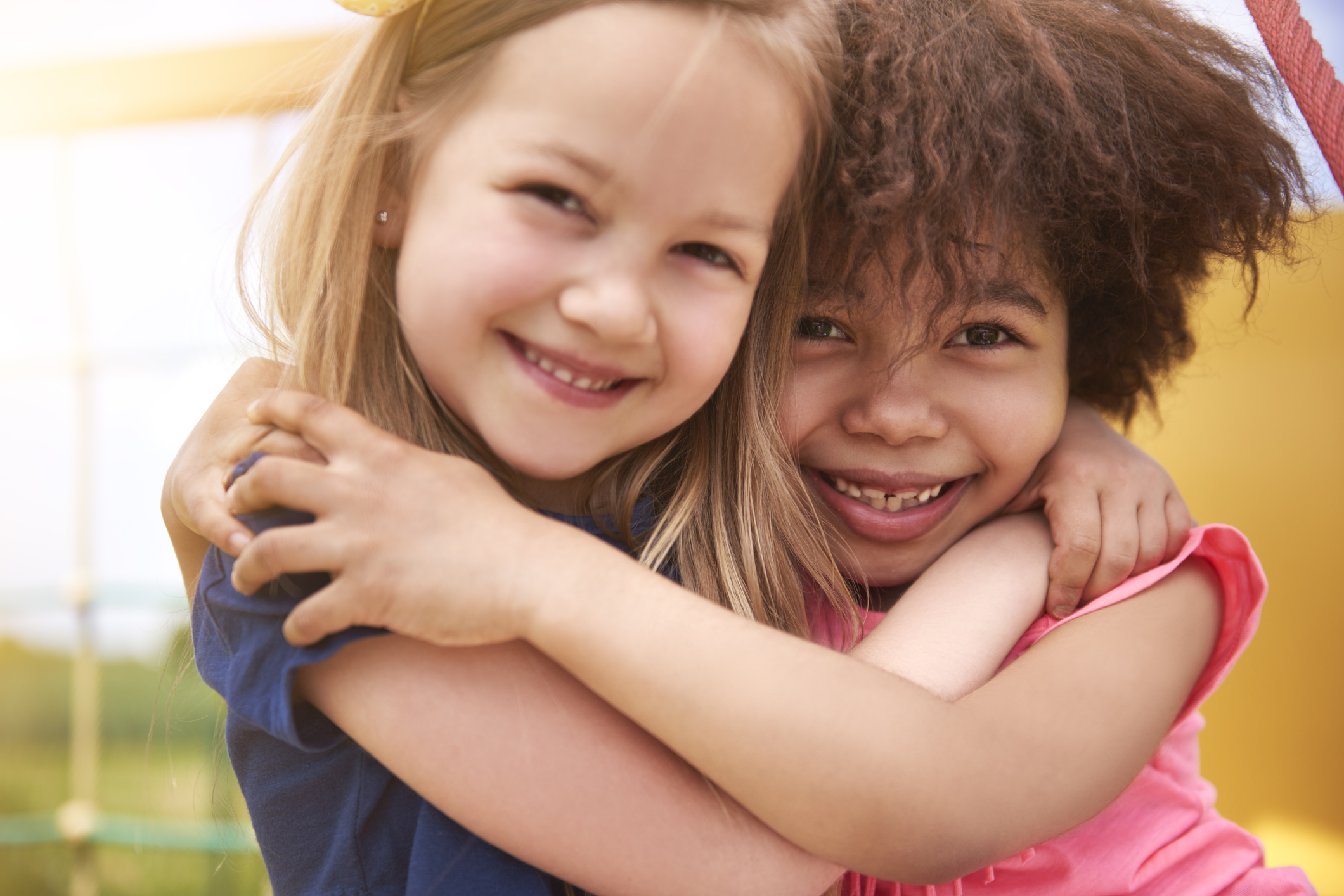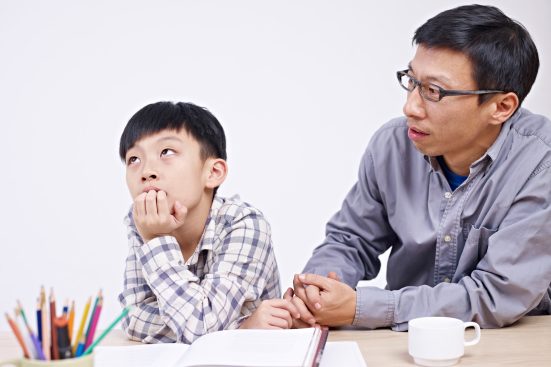Have you looked directly into someone’s eyes today when you spoke with them? Did it help you understand them? Or connect with them? Or did it make you feel uncomfortable? And (perhaps more interestingly) was this eye contact something you thought about, or lack of something you thought about or did you do it all automatically?
Eye contact is a concept that generally doesn’t occupy much of our thinking. Most of us use appropriate eye contact automatically and without much thought. However, eye contact may be an important part of maintaining connected relationships with others and something worth thinking about more often.
On the other hand, some children have more difficulties than others with making eye contact. For example, for children with autism, anxiety, challenging behaviours, or ADHD, making eye contact may be more difficult or overwhelming – compared to neurotypical children.
Here is a brief overview of the potential benefits and risks around what we know about eye contact; particularly in relation to how it is used by children and teenagers – as well as what we might consider if it is something our child potentially finds challenging.
The potential benefits of eye contact:
Most babies are interested in their mothers’ faces within hours or days of being born. From just 2 days of age, typically developing infants prefer looking at people who are looking at them. Babies also consciously turn their heads to make eye contact with others by 6-12 weeks of age and the amount of deliberate eye contact increases throughout childhood and adolescence.
Some research with children and young people suggests that more eye contact seems to lead to – or at least be linked with – more positive outcomes. For example, studies have found that babies and toddlers under the age of 2 who make more eye contact have better language development. As they get older, children who make eye contact with adults when they are given instructions are more likely to follow those instructions. Other studies have found that when children make eye contact with people, they feel less anxious about talking with them.
The potential benefits of eye contact in adults have been studied even more extensively. For instance, experimental studies have found when we make eye contact with others, we are more likely to be able to: accurately identify how people are feeling, more accurately identify our own emotional responses, better manage our anger and frustration with people and better remember their faces.
Other research has found that when people make eye contact with us, we are more likely to consider them to be sincere and less likely to feel rejected or hurt by them.
Is more eye contact always positive?
As always, this research has limits. Many of these studies have been done in laboratory settings using static images and videos without any social contexts. Perhaps once this social contextual information is added, eye-contact is less important for communication than it has been found to be in laboratory settings. It should also be noted that some (not all) research is correlational – eye contact and positive outcomes go together, but this doesn’t prove the eye contact leads to the positive outcomes. Perhaps it is something else (e.g., positive mental health status) which causes both the eye contact and the positive outcomes.
It is also important to note that even looking at the studies – eye contact has not always come out as a positive force. For instance, some cognitive processing studies have suggested people are less able to do difficult thinking tasks when they are looking in someone’s eyes. One study even found that teaching children to break eye contact while they were trying to solve a problem helped them do better at that problem.
Another study found that if someone is getting negative feedback from someone they don’t know well, if someone is afraid or angry, eye contact can make them feel worse. Also, long, unbroken eye contact (i.e., “staring”) is commonly found to increase people’s discomfort in most situations.
Finally, much of the research conducted into eye-contact has been done in Anglosaxon-European cultures. People from other cultural backgrounds may view longer and more intense eye contact less positively.
Understanding children and young people who find eye contact difficult:
Some children and young people find eye contact more difficult than others. For example, children and teens with Autism Spectrum Disorder often find making eye contact more difficult than others. One study found that many children diagnosed with autism had less eye contact than neurotypical children from the time they were 2-6 months of age. Other studies found this reduced eye contact in these infants often continued throughout childhood and adolescence (and adulthood). Another study found that some children/teens with autism not only avoided eye contact but found it overwhelming and distressing – and had higher “brain activation” in certain regions compared to non-diagnosed young people.
It is worth noting however that several studies (including recently conducted research) have not found any differences in eye contact patterns between people diagnosed with autism and those without. It may be that only people with higher levels of severity of autism have different eye contact patterns than those without ASD.
Children/young people with other psychological conditions also have difficulties with eye contact. For example, several studies have found that children who have a diagnosis of an anxiety disorder also have more difficulties with eye contact – feeling more anxious when asked to give eye contact AND when others make eye contact with them compared to their less anxious peers.
Outside autism, there have also been studies to suggest that children with ADHD and challenging behaviours may have more difficulties maintaining eye contact with others (either with peers or with family members).
Should we try to help our children increase their eye contact with others?
Although there are questions which still exist in the literature on eye contact, I think there is enough research to conclude that, for at least some children, eye contact may be an important and helpful social behaviour which helps increase social connection and emotional awareness.
In addition, there have also been interventions to increase eye contact in various groups (e.g., in children with ASD) which have successfully increased eye contact– and led to positive outcomes for these children.
For other children, such as children with autism, anxiety, challenging behaviours or ADHD, eye contact may be unnecessarily distressing or overwhelming, and may not result in any meaningful gains.
Parents/caregivers should consider their own child and think about whether it is worth talking about this issue, or working on it with them.
Here are some ideas for how we might do this.
1. Provide information and invite them to decide whether this is a skill they would like to build:
It can be useful to explain to children, young people and their families that there are many benefits of eye contact. We might say something like:
Looking at people’s eyes or faces (see my next point) can be helpful. Scientists have found it might help us feel braver and more confident with people, help us know what people want and are thinking and can help us get closer to them. It can help us know what to do and say in tricky situations and help us have better friendships. But it is not important for everyone.
Would you like to think with me about how you might be able to do this a bit more often?
2. Acknowledge that it can be hard (while providing hope):
It can be helpful to let our children know that some people find this harder than others. For example, we might say something like.
Some people find it harder to look at faces than others. Some people find it makes them feel uncomfortable or anxious. Some people find it hard because it is hard for them to keep still. Some people find it hard because they have trouble remembering. Some people find it hard because they don’t find faces as interesting as other people do.
It’s not your fault if you find it hard to look at faces when you are talking with them, it’s just the way your brain is. But if you would like to work on this, I can try to help you. Many people slowly over time do feel better about doing this, and get better at it. We can see if this happens for you if you like.
3. Be flexible:
Recent research suggests that looking at people’s faces rather than directly into people’s eyes – may be easier for some young people and yet still achieve all the benefits associated with more direct eye contact.
This means it may be more effective to teach children/teens who struggle with eye contact to look at faces – mouths, foreheads, noses for instance – rather than directly into eyes.
We should also remember that we don’t need to ask young people to look at faces/eyes for a particularly long period of time, nor do we need to suggest they should make eye contact in all situations (as outlined above, eye contact can actually be counter-productive in some situations – eg for solving problems) and or to use extended eye contact (i.e., “staring”). We might explain this to children/teens by saying something like:
– It’s okay to look at noses, mouths, or foreheads instead of eyes if that is easier for you.
– We don’t have to look at people’s faces all the time or for a long time. It is okay to just look at people at the beginning and the end of when they are talking or when we are talking.
– It is perfectly okay to look away from people’s faces when we are trying to think or concentrate hard.
4. Have adults “show rather than just tell” children and young people about eye contact:
As always, children and teens learn a great deal from watching what adults do, not just from what we tell them to do! This means as parents we should be mindful about using appropriate eye contact with our children. This of course does not mean staring, or providing so much eye contact that our children feel uncomfortable and sometimes it is best to turn our gaze away when talking in some instances.
However, providing our own appropriate level of eye contact with our young people (especially when we are providing instructions or listening to our child/teen talk) – is an important way of teaching young people that eye contact can be helpful, and also that it isn’t required all of the time – and that’s okay too.
5. Increasing motivation and decreasing distress for eye contact:
It is counter-productive for us to “force” our children in a punitive way to increase their eye contact or to constantly nag children about this issue – as we know, distressed and unmotivated children or teens are unlikely to change or learn this skill effectively in the long term.
Instead, we can try to use activities which increase young people’s motivation and decrease their distress, for example:
– For younger children we can “gamify” providing eye contact – e.g., peek a boo, or charades, or using silly glasses, eye contact “who laughs first”, play games where we use only eye contact to find an object. We can also use neutral or positive imagery when talking about eye contact – i.e., “rainbow” or “laser” eyes (imagining a laser or a rainbow joining eyes to faces).
– For both older and young children, continuing to calmly provide information about the benefits of eye contact (i.e., the information outline above)
– Some children/young people enjoy using a “track chart” where they self-monitor their progress in remembering to use appropriate eye contact
– Building up eye contact – i.e., encouraging eye contact in easier situations (i.e., with people and in situations in which they feel comfortable) and then gradually in more challenging ones
– We should consider trying to “earn” eye contact from our young people rather than just demand it, for example saying, “I have something I want to tell you (then waiting), would you like to hear it?” rather than “Look at me!”
6. Helping children to remember to use eye contact:
Sometimes young people do not find eye contact distressing, but simply “forget” to use it.
In this case, rather than increasing comfort/decreasing anxiety, it may be more important to work with them to find strategies to use to remember to do this. Young people need strategies they can use themselves, rather than relying on “verbal reminders” from mum/dad/adults. The following strategies may be helpful, depending on the age and the child/young person:
– Using stickers (picture of an eye) in various places
– Setting up “secret code words” we can say to our child when we are out to help them remember (which avoid young people feeling embarrassed in front of others)
– Having children/young people set an alarm on their phone/watch occasionally to remember to use eye contact at school
– Asking them to put a note in their pencil case/locker/computer cases
These types of strategies usually only work in the short term, and are often not well tolerated for long. However, sometimes a short “burst” of these strategies over a few weeks can be enough to still increase the frequency of the behaviour even after they stop being as effective as they were when implemented.
****************
All the best with thinking about whether you want to support your child to develop this behaviour – as always, there are no rules about if, how and when we do this for children – and parents/caregivers and children/young people themselves should be the ultimate decision makers in what happens in their own lives.



